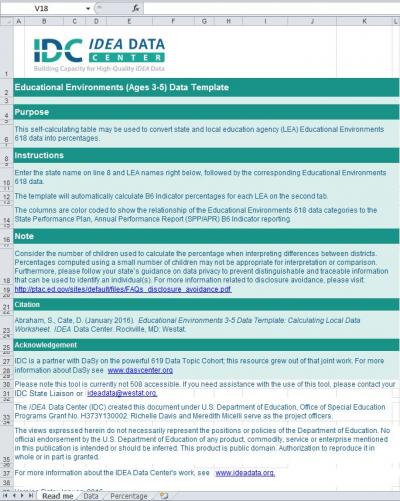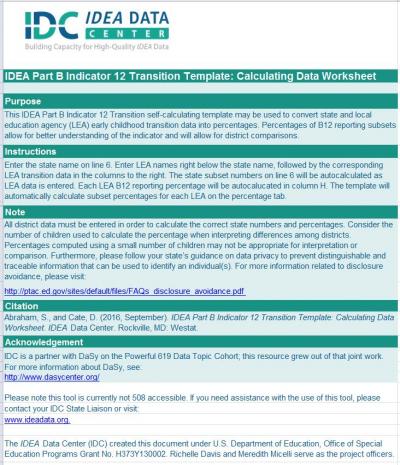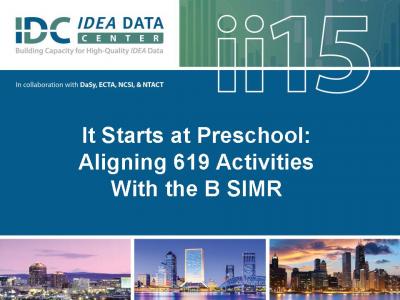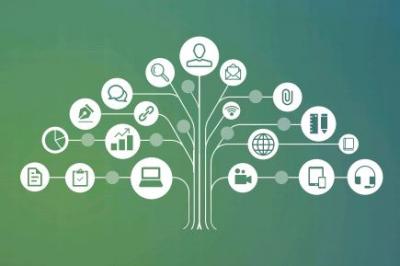Site Search
Results 1 - 7 of 11
Format: Toolkits and Templates
Educational Environments 3-5 Data Template: Calculating Local Data WorksheetThis data template provides SEAs and LEAs the opportunity to see in real-time the percentages of their children ages 3-5 attending and receiving services in specific educational environments. When the LEA 618 educational environments data is simply entered on the data tab, the percentages will be calculated and displayed on the percentage tab. The use of this tool will allow SEAs to compare the percentages of children within educational environments across LEAs.
Format: Applications and Spreadsheets
Educational Environments Ages 3-5: B6 Reporting Tools 2017-2018 Clarifications and Interactive ApplicationThe Reporting Educational Environments resource has been updated with 2017-18 clarifications. State data managers, 619 coordinators, local 619 personnel, technical assistance providers, and other interested parties can use the resource to help with reporting Educational Environments data for children ages 3-5 with disabilities as required for the OSEP Child Count and SPP/APR Indicator 6. States can use the resource's materials as “standalone” tools or as a set.
Format: Applications and Spreadsheets
IDEA Part B Indicator 12 Transition Template: Calculating Data WorksheetThe tool converts state and LEAs early childhood transition data into percentages. Use of the tool enables states to see real-time percentages of children ages 3-5 in the transition reporting categories and compare the percentages of children within the categories across LEAs.
Format: Presentations
It Starts at Preschool: Aligning 619 Activities With the B SIMRThe presentation provides strategies that are important to providing high-quality preschool programs. Specifically, the information focuses on how high-quality preschool programs support improvement in the Part B SIMR. The presentation includes strategies that ensure high-quality early childhood programs as a critical first step toward later school success.
Format: Presentations
National, State and Local Inclusion Data: Accessing and Using Data to Increase Inclusive OpportunitiesThe presentation focused on current national data on inclusive settings for children, ages three to five. Presenters drilled down to state examples of how state share data with local programs and how locals use that data for program improvement. Presenters discussed potential improvement strategies based on data available to state and local programs. Presentation objectives were to: provide an overview of inclusion and Educational Environments 618 and Indicator 6 data, share state and local reporting, and discuss use of data to improve inclusion.
Format: Presentations
National, State, and Local Educational Environments Data: Using the Data to Increase Inclusive Opportunities for Young Children Ages 3-5The session focused on current national and state data on least restrictive environments and inclusive settings for children aged three to five. Participants shared examples and discussed the ways in which they analyze and share data with local programs. In addition, discussions focused on how educational environments data are used to determine specific state and local program improvement strategies and supports.
Format: Toolkits and Templates
Part C IDEA Data Processes ToolkitUsing the Part C IDEA Data Processes Toolkit to document data processes for all 616 and 618 data collections will establish a well-managed process for data collection, validation, and submission. In collaboration with IDC State Liaisons, states can use the toolkit to create and maintain a culture of high-quality data and establish and support consistent practices that produce valid and reliable data, while building the capacity of state staff. The toolkit contains an overview of the toolkit, Data Collection Protocols, SPP/APR Indicator Protocols, a State Landscape Protocol, a Local EI Program Determinations Protocol, a Data Collections Calendar, and additional resources that provide a structure for documenting data processes. The Data Collection Protocols are in Word, and states can tailor them meet their states' specific documentation needs.








